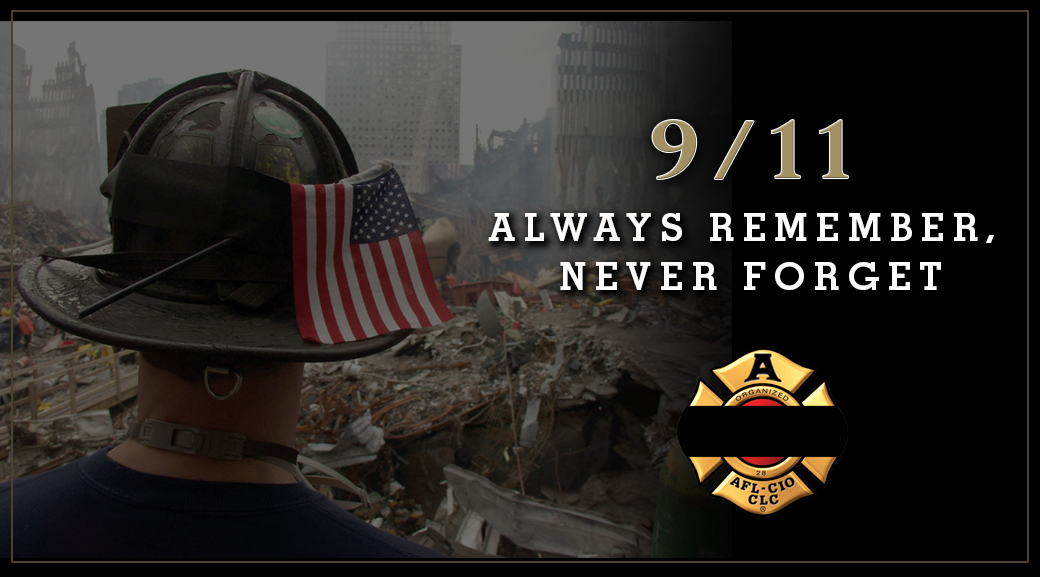
History has long been portrayed as a series of "great men" taking great action to shape the world we live in. In recent decades, however, social historians have focused more on looking at history "from the bottom up," studying the vital role that working people played in our heritage. Working people built, and continue to build, the United States. In our new series, Pathway to Progress, we'll take a look at various people, places and events where working people played a key role in the progress our country has made, including those who are making history right now. Today's topic is the terrorist attacks of 9/11.
Sometimes, progress comes from focused activism that pressures policymakers and other actors to create change. Other times, progress comes from the ways people live their lives and do their jobs. The terrorist attacks of Sept. 11, 2001, are a perfect example of this idea, as union members responded to chaos and horror with courage and grace, many giving their lives in service of the country they loved.
Without even getting into the history of the building and staffing of the World Trade Center and Pentagon, union members were part of every aspect of that day. Of the nearly 3,000 who directly died because of the attacks, some 600 were union members, as were most of the people who have died of 9/11-related illnesses and injuries since then. Nearly 2,100 people have died since the attacks, and the number of those who have died since Sept. 11, 2001, is expected to pass the number who died in the attacks by 2021.
People's first thought is of the 90,000 first responders, union members who did as we always do and rushed into the chaos to help people. Since then, 55,000 of them have registered with the World Trade Center Health Program and that number is expected to continue growing. Many others worked on the recovery, cleanup and rebuilding efforts and hundreds of thousands of working people lived in the areas affected by the environmental hazards caused by the attacks.
In addition to the firefighters, law enforcement personnel and emergency medical teams that responded on 9/11, you also had the union members working in the building, from restaurant workers to communications workers stationed at television transmitters atop the building. Transport workers moved people to and from the affected areas.
In addition to the unions that responded on 9/11, many others joined the rescue and cleanup crews. Members from multiple unions worked to reconnect New York and Wall Street to the world and rebuild the Pentagon's communication system from the ground up. Members of the Motion Picture Studio Mechanics Union/IATSE put up lighting at Ground Zero to assist in rescue operations. Members of Theatrical Stage Employees (IATSE) Local One, set up Yankee Stadium as the venue for the memorial service for first responders who died at the World Trade Center. Laborers cleaned up the debris and wreckage on-site. Comedian Jon Stewart, a member of several entertainment unions, used his platform to fight for federal assistance for workers, particularly first responders, who became ill as a result of 9/11. One World Trade Center, built on the site of the old World Trade Center, that provides a memorial for those lost, was built with union labor.
And that's just the beginning of the very diverse group of unions that participated in the recovery and rebuilding after 9/11. All in all, 49 unions participated in those efforts. Not only did these workers help their fellow Americans, they also demonstrated strength, resiliency and patriotism in the fact of unspeakable tragedy. And they showed us that the pathway to progress is built through solidarity.

